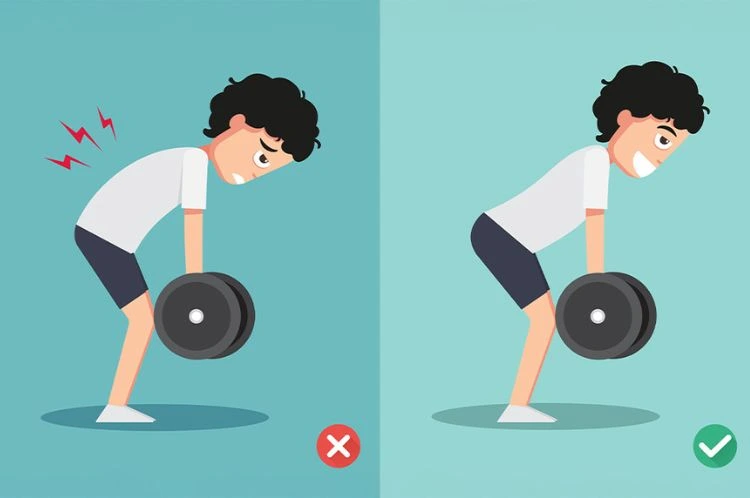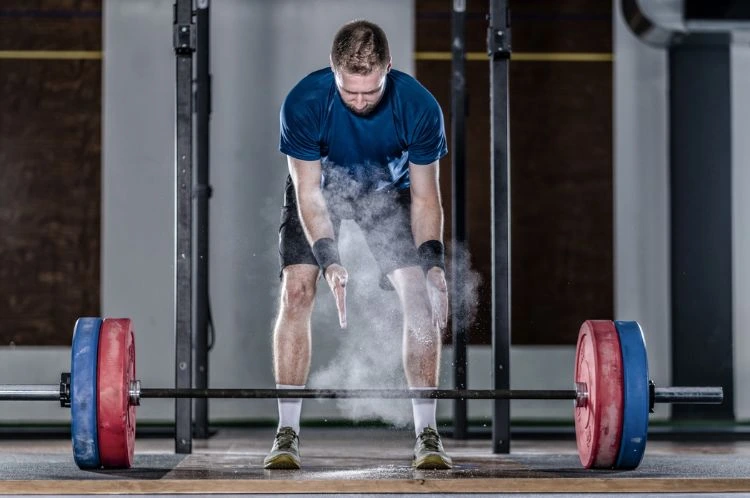There are two types of pain. One that hurts you and another that changes you—Jetti Woodruff. Weightlifting gives you the latter. It changes you, both physically and mentally.
Many people view weightlifting as intimidating, and rightly so. There are some common concerns related to weightlifting, which include fear of injury, concerns about getting too muscular, or simply not knowing where to start, which usually overshadow the advantages. But weightlifting has so much to offer, especially for beginners looking to improve their overall health. In this article, we’ll break down the science, address the myths, and show why weightlifting is a safe, effective, and rewarding choice for everyone.
The Science Behind Weightlifting
When you lift weight, your muscles go through micro tears, which repair themselves during the recovery period. These repairs add an extra layer of muscles, making them stronger each time, which plays a key role in building strength and endurance.
Studies show that weightlifting also promotes a healthy hormonal balance by increasing growth hormones and testosterone, which help with muscle recovery and general well-being.
With growing awareness of these benefits, weightlifting has been gaining popularity. From fitness studios to home gyms, people from all walks of life are embracing it, not just to build celebrity-like muscles but as a way to enhance their entire quality of life.
Why Lift? Discover the Transformative Perks of Weightlifting
Thinking that weightlifting is just to get those bulky and veiny muscles is not completely true. Weightlifting is for everyone, irrespective of whether you want to compete in a bodybuilding competition or not. Here are some of the advantages of weightlifting other than muscle building:
- Improves life expectancy
- Boosts metabolism
- Strengthen bones
- Improves sleep
- Supports mental health
Let’s have a look at all these benefits in detail.
1. Improves Life Expectancy
Weightlifting isn’t just about building muscle. Studies have linked regular strength training to a lower risk of chronic conditions such as heart disease, diabetes, and certain cancers, potentially extending your life. Longer life expectancy is not directly related to weight training; however, more muscle mass results in better strength, which makes you live longer.
2. Burns Calories, Even at Rest
Weightlifting improves metabolism by increasing muscle mass, which in turn boosts the resting metabolic rate (RMR). Muscle tissue burns more calories at rest compared to fat tissue, leading to higher energy expenditure even when not exercising.
Practical Tip: If you’re aiming to boost metabolism through weightlifting, try starting with compound exercises like squats and deadlifts. These exercises work multiple muscle groups at once, helping you build more muscle and burn more calories over time.
3. Strengthens Bones. Save Yourself from Fractures
When we lift weights during our strength training, we apply controlled stress to your bones. This stress stimulates osteoblasts (bone-forming cells) to increase their activity, leading to the production of new bone tissue. Over time, as we continue our weightlifting, it enhances bone density, making your bones stronger and less prone to fractures in your old age.
4. Improves Sleep Quality
Weightlifting can help improve the quality of your sleep, which is essential for recovery. A study by the American Heart Association showed that people engaging in resistance training improved their sleep duration by almost 40 minutes compared to people who regularly engaged in aerobic exercises (around 23 minutes).
5. Supports Mental Health
Besides physical benefits, weightlifting can significantly boost our mental well-being. It helps lower cortisol levels (the body’s primary stress hormone) and increases the production of endorphins and dopamine chemicals that make us happy, satisfied, and relaxed.
These are 5 common improvements you will experience in your body after weightlifting regularly. Weight lifting can also impact men and women differently, here’s some of the different ways it can help both men and women:
| Advantages | Men | Women |
| Muscle Growth | Men over a period of time experience significant increase in muscle mass and strength | For women, weight lifting can give them toned muscles, improved strength, and less bulky growth |
| Bone Health | Regular weight lifting increases bone density, reducing osteoporosis risk | Enhanced bone density, especially important post-menopause |
| Metabolic Rate | Boosted metabolism, aiding in fat loss and muscle gain | Higher metabolism, aiding in fat loss and lean muscle maintenance |
| Hormonal Balance | Weight lifting naturally Increases testosterone levels, boosting muscle growth and libido | Women experience enhanced hormonal balance, including estrogen regulation. |
| Functional Strength | Improved overall body function and daily activities | Along with improved strength, regular weight exercises improve blood circulation reducing period cramps and strengthen pelvic muscles that can ease the delivery process. |
| Weight Management | Effective in maintaining healthy body weight | Helps in managing weight and reducing body fat |
Is Weightlifting the Best Exercise for Weight Loss?
Weightlifting, when paired with a balanced diet, can be one of the most effective methods for reducing excess body fat. Unlike cardio, which burns calories only during the workout session, weightlifting continues burning calories during the rest period, helping build lean muscle mass. Here’s how it works:
Increased Muscle Mass = Higher Basal Metabolic Rate (BMR): Muscle burns more calories at rest than fat. This means that as you build more muscle, your body naturally burns more calories throughout the day.
EPOC (Excess Post-Exercise Oxygen Consumption): After a weightlifting session, your body continues to burn calories as it continues repairing muscles and restoring oxygen levels. This is known as the “afterburn” effect, allowing you to burn more calories post-workout.
Fat Loss Without Muscle Loss: Weightlifting preserves lean muscle while targeting fat. Unlike cardio exercises, which can cause muscle loss, weightlifting ensures that the weight is lost primarily through fat, not muscle.
Expert Advice if your Were to Start Weightlifting Tomorrow
 Source: Freepik
Source: Freepik
Getting started with weightlifting doesn’t have to be complicated. Here are a few basics to consider:
Types of Weight Training: There are different approaches to weightlifting. It includes:
Strength training (focusing on lifting heavy weights)
Hypertrophy (building muscle size)
Endurance (lifting lighter weights for more reps).
PRO TIP: If you are a beginner, a mix of all three can help develop a solid foundation.
Recommended Sets and Reps: Beginners can start with 1-2 sets of 10-12 reps for each major muscle group, working out 2-3 times per week. As you progress, you can add more sets or increase weight gradually under the guidance of the trainer.
Recovery Time: Muscle recovery is essential. Beginners should give each muscle group at least 48 hours of rest between sessions. Good sleep, hydration, and balanced nutrition further improve muscle recovery.
Conquering Fear: Lifting weights can be intimidating, especially for a beginner. For context, sports like football, baseball and cycling have SIGNIFICANTLY more chances of serious injury when compared to gym related injuries.
Practical Tips for Beginners
- Choose the Right Weight: Start with weights you can comfortably lift for 10-12 reps without straining. You should feel challenged by the last few reps, but avoid going too heavy at first.
- Focus on Form Over Weight: Proper form is essential for preventing injuries. Before increasing weight, make sure you’re performing each exercise with proper posture and control. A trainer’s role is crucial in instructing you on proper form.
Watch this: 8 Gym exercises (You are doing wrong)
- Stay Consistent, But Patient: Beginners must understand that weightlifting—or any other form of exercise—is a long-term process. It might take you one to one and a half years of disciplined training and a balanced diet to see visible results.Stay away from fancy Supplements: Don’t start using any fancy supplements that are promoted by influencers, as most of them are paid for promoting the product. A protein powder and creatine are all you need.
- Discipline: After seeing visible results, many individuals lose motivation. It is important to note that fitness is not a destination but a lifelong journey.
Following these guidelines will help you stay on track and continue to see progress in your fitness journey. Remember, consistency is key to achieving your goals.
Common Mistakes to Avoid When Weight Training
 Source: Freepik
Source: Freepik
As you start, keep these common mistakes in mind to ensure safe and effective progress:
- Neglecting Proper Form: Proper form is crucial to avoid injuries and maximize results. If possible, get guidance from a trainer or watch tutorial videos to learn correct techniques for each exercise.
- Lifting Too Heavy Too Soon: Many beginners make the mistake of starting with weights that are too heavy, which can lead to injury. Start with manageable weights and focus on building a solid foundation before increasing the load.
- Skipping Warm-Ups and Cool-Downs: Warming up prepares your body for exercise by increasing blood flow to muscles, while cooling down helps prevent soreness and supports recovery.
- Ignoring Progressive Overload: To see results, it’s important to gradually increase weights or intensity over time. Small, consistent increases will help you improve without overwhelming your muscles.
- Lack of Rest and Recovery: Muscles grow during rest periods, not while lifting. Make sure to space out your workouts to give your muscles time to repair and grow.
- Not Wearing Proper Footwear: Wearing appropriate footwear during weightlifting is crucial. Proper shoes provide stability and support during lifts, reducing the risk of slipping or losing balance. Additionally, shoes can protect your feet in case weights are dropped accidentally.
Suggested Diet Plan for Weightlifters
A balanced diet is essential to support weightlifting. Here’s a simple 1-day diet plan for different dietary preferences:
1. Vegetarian:
Breakfast: Greek yogurt with mixed berries and a handful of almonds.
Lunch: Lentil and quinoa salad with mixed vegetables and a side of whole-grain toast.
Dinner: Cottage cheese and spinach stir-fry with brown rice.
Additional Dietary Tip: Have a small, protein-rich snack like cottage cheese or a handful of nuts after your workout to support muscle recovery.
2. Vegan:
Breakfast: Oatmeal topped with chia seeds, banana slices, and a spoonful of almond butter.
Lunch: Chickpea and avocado salad with mixed greens and a side of sweet potato.
Dinner: Tofu stir-fry with bell peppers, broccoli, and quinoa.
Additional Dietary Tip: Add a post-workout smoothie with plant-based protein powder, banana, and almond milk to help replenish energy and promote muscle repair.
3. Non-Vegetarian:
Breakfast: Scrambled eggs with spinach and whole-grain toast.
Lunch: Grilled chicken breast with quinoa and vegetable medley.
Dinner: Salmon filet with steamed asparagus and brown rice.
Additional Dietary Tip: Include a handful of berries or a small piece of fruit after dinner to satisfy any sweet cravings while adding antioxidants that support recovery.
ALSO READ: TRENDING! What is Personalized Nutrition and How To Incorporate It In Your Diet
Conclusion
Weightlifting is for everyone, and there’s no need to fear it. With the right approach, it can be a safe and effective way to improve both your physical and mental health. Whether your goal is to lose weight, gain strength, or simply feel more empowered in your body, weightlifting can help you achieve it. By starting slowly, learning proper form, and staying consistent, you’ll find that weightlifting becomes an incredibly rewarding part of your fitness journey.
For more blogs related to health and fitness, you can check out our blogs at Stay Fit Stay Healthy.
Recommended Blogs:
The Gut-Brain Axis: How your Gut Health Affects your Mind and Body

